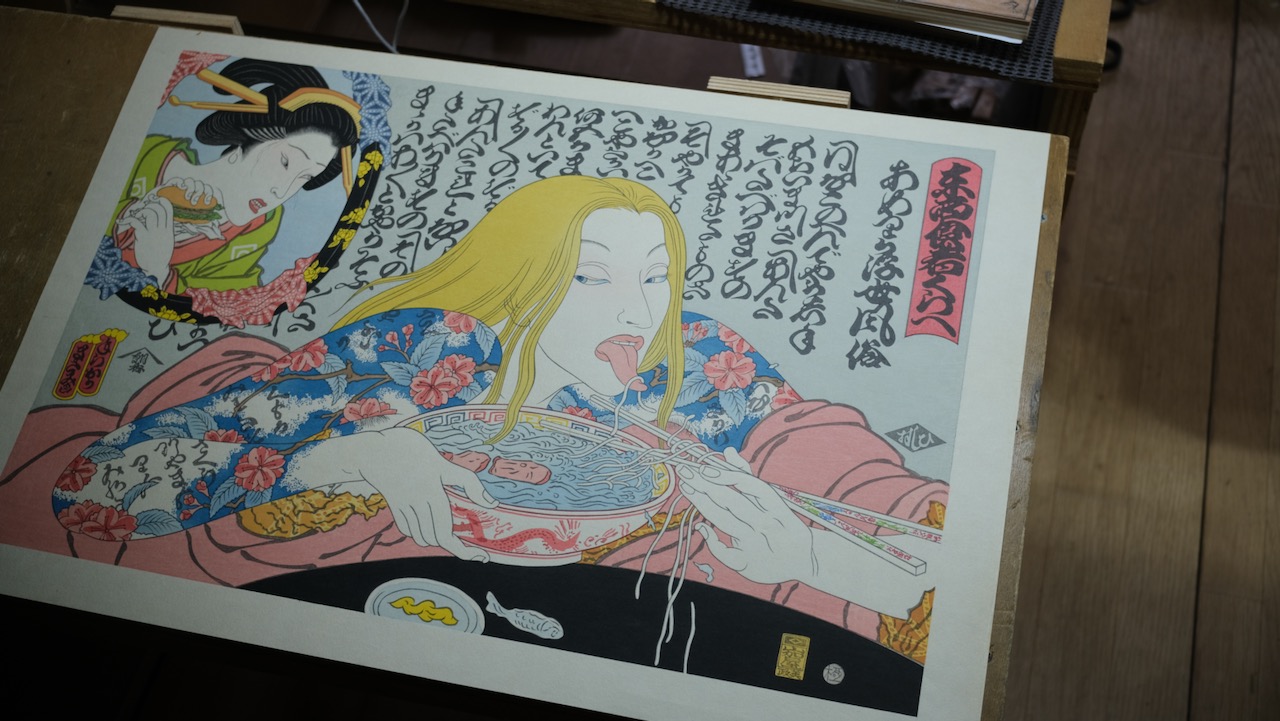Fresh instant coffee and crackers to start the day. We leave in a good mood, packed and ready to go to Sensei. Vladimir changes to the Shinkansen gear, I connect. We set off a little late but arrive on time.
Our homework is checked. Today we learn to cut with the back of a knife. Vladimir regularly gets an approving word. The sensei patiently corrects me again and again on my mistakes.
There are so many things to pay attention to, it is not easy. The way you sit, move, hold the knife, cut… everything is different. I didn’t know my hands could sweat so much. The knife almost slipped out of my hand. Even my left hand, which is only supposed to hold the plate, is covered with drops of sweat on the top of it. Oh my.
From now on, the plate will no longer be turned around.
Many questions are asked. Every question is taken seriously. In between, he sharpens our knives. Including the French one we got from Matthieu Coulanges - an interesting knive, but apparently with a blade much too thick for the finer carving.
He shows us a board on which his career is written in English. Vladimir recognises with enthusiasm that he has carved the work of one of his favourite Mokuhanga artists. Sensei confirms this and pulls out a folder from somewhere in a cupboard. A pack of prints he has carved. Some more impressive than others. Among them is a work (after a painted folding screen) that looks like a pen drawing. He carved it for about 6 months, 9 hours a day. About 50 plates and 67 prints. Wow.


He is showing a print cut from a watercolour by a European artist Rosanne. He cut 120 blocks for it. It was printed in an edition of 30.
And so it goes on. Without saying a lot of words, he brings out piles of prints or folders from all over the tiny studio. He shows off the beautiful blocks he has cut. It is hard to have an idea of what is here in front of our eyes. We have the chance to hold it all in our hands, to take pictures of it, wow. This is incredible.


We no longer doubt that he is the best carver in Japan. He has been asked by the National Museum to carve the unpublished prints of Hokusai. He once turned down a commission for Steve Jobs. His studio is full of ukiyo-e and other blocks. Even in the shower! And yet this is such a humble and nice man. A true craftsman who loves what he is doing. He carves anything and everything for anyone, indiscriminately. He has 72 regular students, eight of whom are in training with him. Because he is so busy cutting the series for Hokusai, there are not many classes these days. I realise now that this was the reason why he had to think a while about our request to take classes with him. How lucky we were!

Suddenly it’s all about Bokashi, and about Bokashi Ide. I understand that what he shows is also related to his cutting work and not just printing. He is also a master printer, but he does not practise it. He often works with the best printer in Japan, who lives a fifteen minute walk from his studio. As I want to know more about this kind of Bokashi, he promises to give a demonstration after lunch.
Sensei changes his work suit for his normal outfit. Together we walk to our tribal restaurant. Sensei in the lead. He enjoys good food, drinks and coffee a volonté, and company. This is nice. He tells us that the Finns Tuula and Kari who we met at the conference are friends. He cut a bunch of blocks for Kari to help him research a Finnish counterpart to the Japanese wood. He has been to Finland three times. And even in Belgium three years ago!
Our interpreter, Alexandra, keeps her eyes and ears open for everything she sees and hears. We ask a lot of interesting questions, she says, and she learns a lot. It is also funny that one of the people we met at the fair, Charles from Seattle, is an old fellow student of hers. It’s a small world.
After dinner Sensei shows us the Bokashi Ide. He is using a soldering iron to do it. His joke is that you can have a feel with your jaw if it is hot enough yet. First he scrapes the edge of the wood with a piece of reed that he has been sucking on for about 10 minutes.

We also found out that he plays the trombone in his spare time. His brother plays the trumpet and can be heard regularly on the radio.
After class we go to Sokaido with Alexandra. We stock up on Holbein ink. This is going to have a negative effect on the state of the suitcases business.
We also learn about the ‘dark side’ of Japan - the hosts and hostesses.
But more on that later. For now, time to sleep!